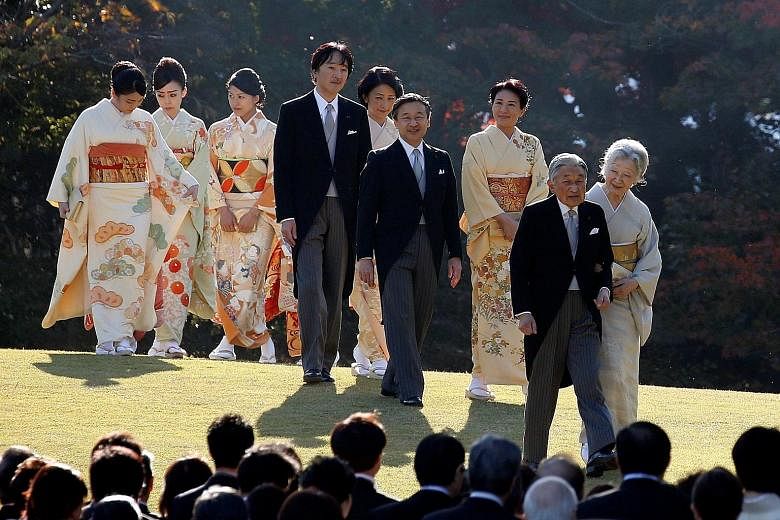Japan has announced the long-awaited date of abdication for revered Emperor Akihito.
It will take place on April 30, 2019, the first such move in 200 years.
His elder son, Crown Prince Naruhito, 57, will be the country's 126th emperor the day after, on May 1, marking the start of a new era for Japan.
Emperor Akihito had ascended to the largely ceremonial position on Jan 7, 1989, the day his father, Emperor Hirohito, died.
But in August last year, he hinted at his desire to step down. He said in a rare nationally televised address that old age impeded him in carrying out his duties fully, even though the Imperial Household Agency had in recent years lightened his workload.
The ruler, who turns 84 on Dec 23, has had heart surgery and treatment for prostate cancer.
The decision on the abdication date was reached after the 10-member Imperial Household Council, chaired by Prime Minister Shinzo Abe, met for more than an hour yesterday morning.
The date will be formally reported to the Cabinet on Tuesday.
After he advised Emperor Akihito of the decision, Mr Abe told reporters: "A big step has been made towards the imperial succession."
He added that the government will proceed with the necessary procedures leading to abdication, which will include a decision on the new era name, "earnestly and with the blessings of the citizens".
Emperor Akihito's reign is named the Heisei era (achieving peace), and his time on the throne has been marked by active efforts to soothe the wounds of a war fought in the name of his father.
Chief Cabinet Secretary Yoshihide Suga explained yesterday why the Imperial Household Council chose the April date for the abdication. It was a "quieter environment" than another date under consideration: March 31, 2019, which coincided with the close of a fiscal year.
April 29 is Showa Day, a public holiday that marks the birthday of the late Emperor Hirohito.
Fixing the abdication for April 30 would therefore allow three consecutive days of imperial rituals for a smooth handover, said Mr Suga.
The last abdication in Japan took place in 1817, when Emperor Kokaku retired.
The current move is taking place under a special one-off law passed in June.
Under the 1889 Meiji Constitution, only posthumous succession was allowed, to prevent power struggles that could destabilise the imperial system.
In 1947, however, the Meiji Constitution was replaced by the war-renouncing Constitution, which stripped the emperor of his status as a "divine ruler". The emperor is now a "symbol of the state and unity of the people", with no political power.

